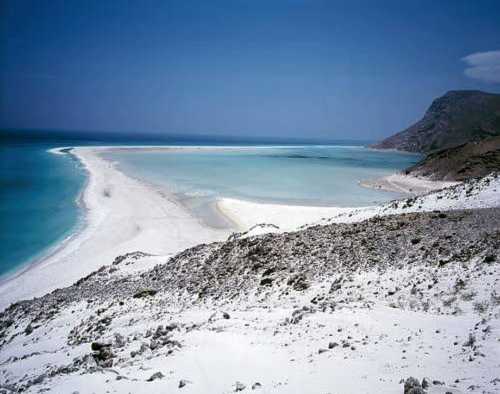Tarim is a historic town situated in Wadi Hadhramaut in Yemen, in the southern part of the Arabian Peninsula. It is widely acknowledged as the theological, juridical, and academic center of the Hadhramaut Valley. The palaces of Tarim are among the most intricate and technologically sophisticated mud-brick structures in the world. Their architectural style is an elaborate synthesis of southeast Asian, Neo-Classical, Rococo, and Hadhrami elements, reflecting the role of Tarim as a crossroads of trade between east and west. This historic city is also the theological and academic center of the wadi and features the Al-Awqaf library, a collection of 14,000 religious manuscripts. A 50-meter-high, unreinforced mud-brick minaret, the tallest on the Arabian peninsula, characterizes the city. Although the entire Yemeni territory of Wadi Hadhramaut was declared a World Heritage Site in 1982, preservationists have focused their attention primarily on the nearby walled city of Shibam, leaving the Tarimi palaces in various states of disrepair. The unification of Yemen in 1992 returned ownership of the palaces from the government to private individuals, and, while the majority of the buildings remain in use, many lay neglected by absentee owners. An umbrella organization for the preservation and management of the palaces is planned, as well as the establishment of a Center for Mudbrick Architecture. #heritage #nature #frozenintime #tarim
Izzaq Is
Popular Trip Moments
Yemen Scenery | Socotra guide | Socotra Island | I discovered the last dragon blood tree forest on Earth | I Flew to this Unknown Island for this. | Real-life Zelda, the most alien-like island on Earth | This scenery in Africa doesn't match the skin color of the local people. | [Yemen] Socotra Island, a World Heritage Site reminiscent of the planet Namek | Discover the Most Alien-Like Place on Earth|It's So Surreal. | Socotra: The Alien Landscape of Earth's Most Isolated Island | Socotra Island, Yemen 🇾🇪 | The island that looks out of this world; finding the Dragon Blood Trees | A land forgotten by humans, yet cherished by the gods | Socotra Island: A Miracle of Life and a Natural Poem in the Indian Ocean | Dragon Blood Tree in Socotra Island | Take you to Socotra Island, Yemen, for a 7-day trip on the third day
Popular Destinations
Lahore Travel | Riyadh Travel | Izmir Travel | Tehran Travel | Oslo Travel | Stockholm Travel | Bengaluru Travel | Colombo Travel | United Kingdom Travel | Harare Travel | Moscow Travel | Birmingham Travel | Taipei Travel | Foshan Travel | Porto Travel | Chiang Mai Travel | Wuxi Travel | Salisbury Travel | San Casciano in Val di Pesa Travel | Kharkiv Oblast Travel | Troon Travel | Castine Travel | Gera Travel | Shari District Travel | Zanzibar Travel | Minden Travel | Saint Francisville Travel | Beatrice Travel
Recommended Attractions at Popular Destinations
Bangkok attraction near me | Manila attraction near me | Tokyo attraction near me | Taipei attraction near me | Hong Kong attraction near me | Seoul attraction near me | Kuala Lumpur attraction near me | Los Angeles attraction near me | Shanghai attraction near me | New York attraction near me | Shenzhen attraction near me | Osaka attraction near me | Singapore attraction near me | London attraction near me | Guangzhou attraction near me | San Francisco attraction near me | Beijing attraction near me | Macau attraction near me | Bali attraction near me | Jakarta attraction near me | Paris attraction near me | Ho Chi Minh City attraction near me | Istanbul attraction near me | Phuket attraction near me | Chicago attraction near me | Seattle attraction near me | Toronto attraction near me | Orlando attraction near me | Cebu attraction near me | Chiang Mai attraction near me
Popular Attractions
The Ancient City | KidZania Kuala Lumpur | Julong Bay Hot Springs | SHIBUYA SKY | Wet World Water Park Shah Alam | Jewel Changi Airport | Cruise Tasik Putrajaya | Malaysia Heritage Studios | Universal Studios Singapore | Jiayang-Suoluo Lake | Edinburgh Castle | Singapore Zoo | The Land of Legends Theme Park | Furong Town | Cardiff Castle | Hon Thom Departure Terminal - Sun World Hon Thom Nature Park | Garuda Wisnu Kencana Cultural Park | Bund Sightseeing Tunnel | Burj Khalifa | Disneyland Paris | Adventure Waterpark Desaru Coast | i-City Theme Park | Gamuda Cove Discovery Park | Oia | London Eye | Chatsworth House | Hong Kong Disneyland | Tianmen Mountain National Forest Park | Huangpu River Cruise(Shiliupu Pier) | Shanghai Ocean Aquarium
Popular Ranked Lists
Top 10 Local Restaurants in Boston | Top 10 Local Restaurants in Tel Aviv | Top 20 Local Restaurants in Buenos Aires | Popular Best Things to Do in Coolangatta | Popular Luxury Hotels Near White River | Top 15 Local Restaurants in Christchurch | Top 5 Best Things to Do in Surfers Paradise | Popular Premium Hotels in Shan | Popular Luxury Hotels Near Norquin Department | Popular Luxury Hotels Near Nelspruit | Popular Luxury Hotels in Malargue Department | Popular Best Things to Do in Coldstream | Popular Best Things to Do in Watsons Bay | Popular Best Things to Do in Darlinghurst | Popular Premium Hotels in Dingwall | Top 10 Local Restaurants in Stockholm | Popular Best Things to Do in Parkside | Popular Best Things to Do in Stirling | Popular Luxury Hotels Near Kruger National Park | Popular Premium Hotels in Altai Republic | Popular Best Things to Do in Helan | Popular Best Things to Do in Summerlands | Top 9 Local Restaurants in Lushan Global Geopark | Popular Best Things to Do in Bondi Beach | Top 10 Local Restaurants in Cusco | Popular Best Things to Do in Koonya | Top 10 Local Restaurants in San Diego | Top 16 Local Restaurants in Hohhot | Popular Luxury Hotels Near Mendoza | Popular Best Things to Do in Manly
Payment Methods
Our Partners
Copyright © 2025 Trip.com Travel Singapore Pte. Ltd. All rights reserved
Site Operator: Trip.com Travel Singapore Pte. Ltd.
Site Operator: Trip.com Travel Singapore Pte. Ltd.











































